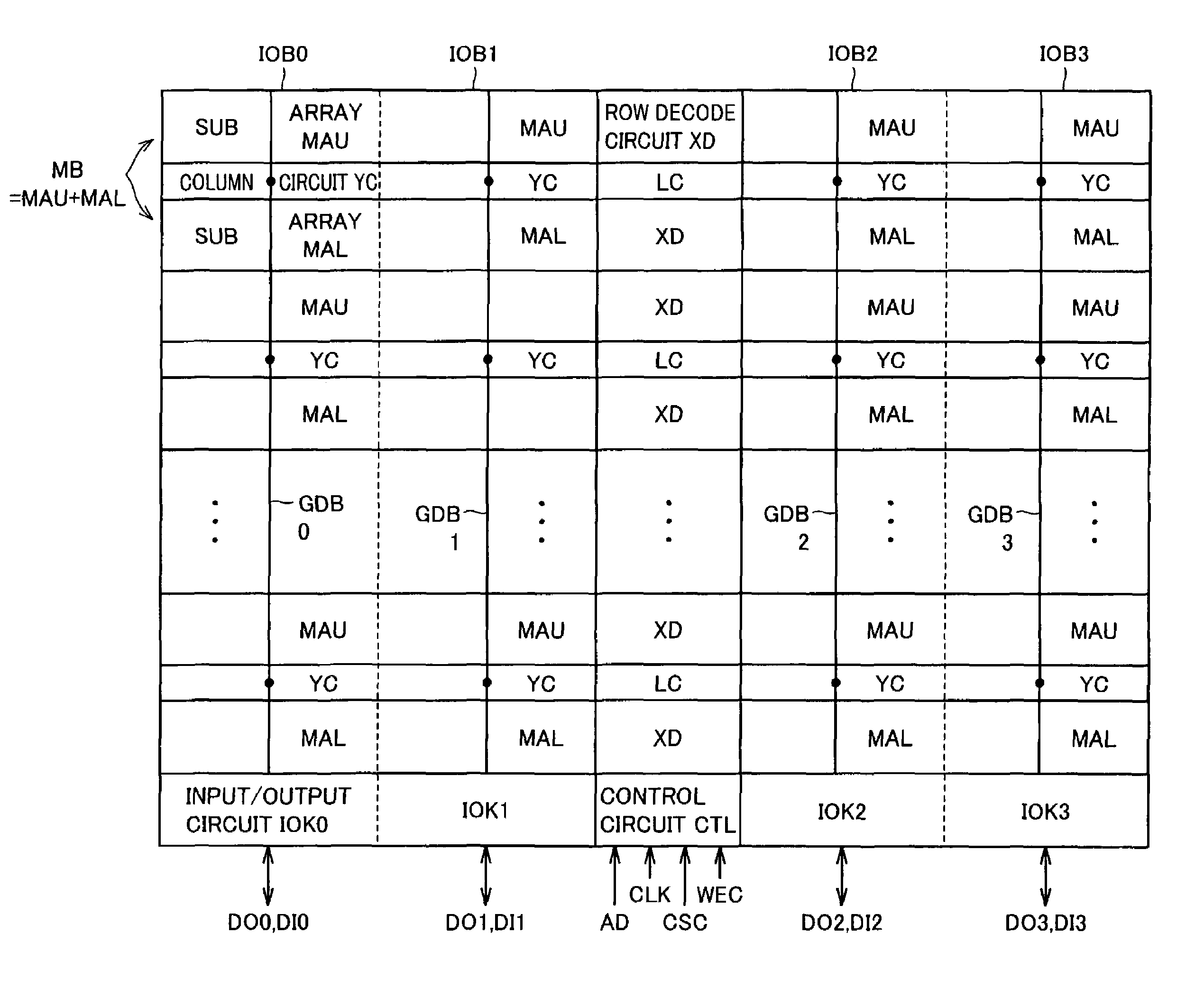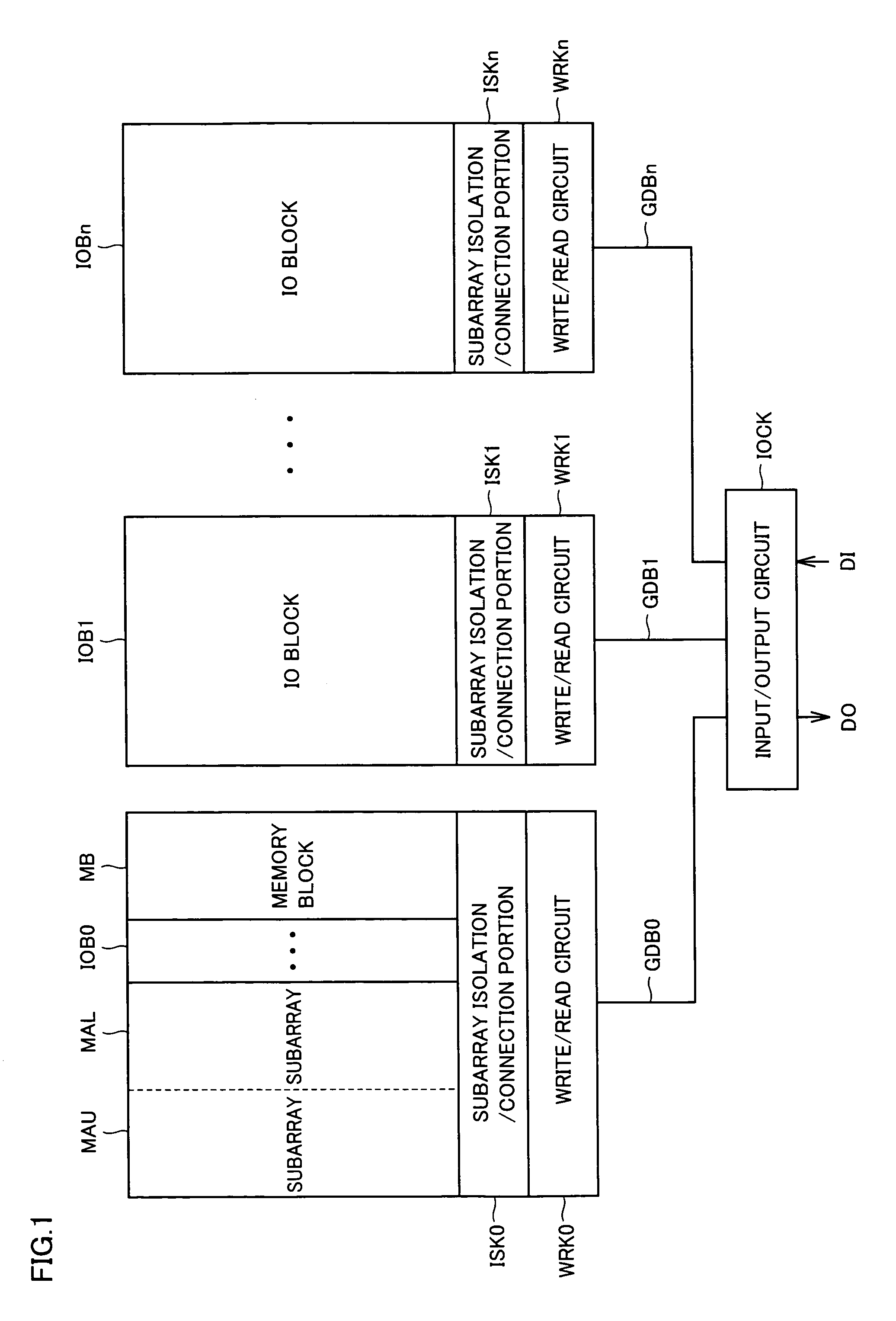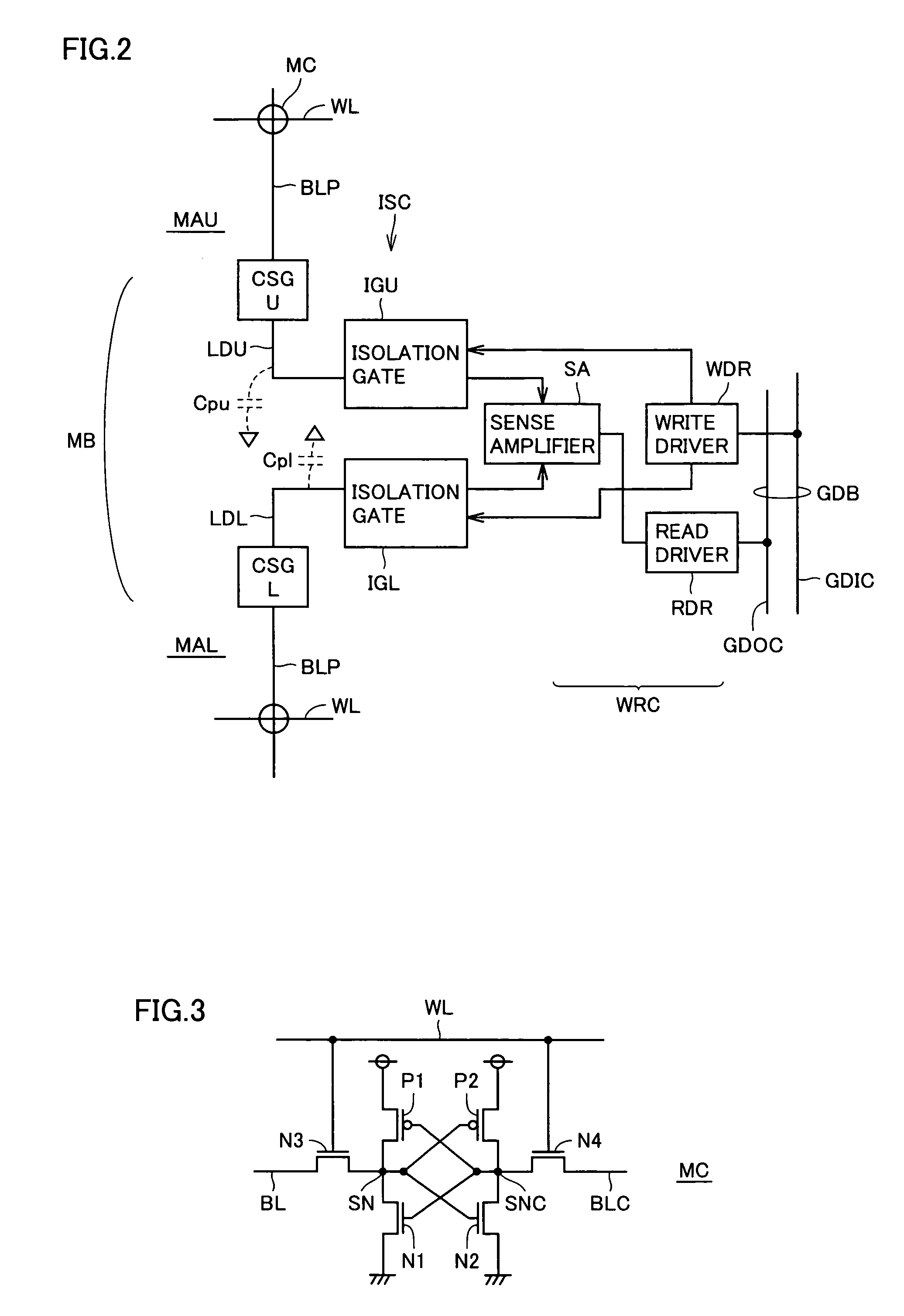Semiconductor memory device allowing high-speed data reading
a memory device and semiconductor technology, applied in the direction of information storage, static storage, digital storage, etc., can solve the problems of large load, inability to implement high-speed reading, and increase the load of bit lines, so as to reduce the load of an internal data bus and high-speed data reading
- Summary
- Abstract
- Description
- Claims
- Application Information
AI Technical Summary
Benefits of technology
Problems solved by technology
Method used
Image
Examples
first embodiment
[0053]FIG. 1 is a conceptual diagram of a construction of a main portion of a semiconductor memory device according to a first embodiment of the present invention. In FIG. 1, a memory array is divided into a plurality of IO blocks IOB0-IOBn. Each of IO blocks IOB0-IOBn corresponds to one bit of external input data DI and external output data DO. IO blocks IOB0-IOBn concurrently input and output data.
[0054]Each of IO blocks IOB0-IOBn is divided into a plurality of memory blocks MBs. Memory block MB in IO block IOB0 is representatively shown in FIG. 1. Memory block MB is further divided into subarrays MAU and MAL. One memory block MB is selected in each of IO blocks IOB0-IOBn, and one of subarrays MAU and MAL in a selected memory block is further selected.
[0055]IO blocks IOB0-IOBn, respectively, include write / read circuits WRK0-WRKn for writing / reading internal data and subarray isolation / connection portions ISK0-ISKn for performing isolation / connection of write / read circuits WRK0-WRK...
second embodiment
[0151]FIG. 14 schematically shows a construction of column circuit YC of a semiconductor memory device according to a second embodiment of the present invention. Column circuit YC shown in FIG. 14 is different in construction from column circuit YC shown in FIG. 5 in the following points. Specifically, data line precharge circuit DPCG is provided for local data lines DU and DCU. The data line precharge circuit is not arranged for local data lines DL and DCL for subarray MAL.
[0152]In addition, subarray specifying signals BSCL and BSCU are generated in synchronization with internal clock signal ICLK. The other portions of the construction of column circuit YC shown in FIG. 14 are the same as those of column circuit YC shown in FIG. 5, and corresponding portions are indicated with the same reference characters and detailed descriptions thereof will not be repeated.
[0153]FIG. 15 is a signal waveform diagram representing an operation in data reading of column circuit YC shown in FIG. 14....
third embodiment
[0165]FIG. 17 schematically shows a construction of a main portion of a semiconductor memory device according to a third embodiment of the present invention. The semiconductor memory device in FIG. 17 inputs / outputs data of 4 bits, by way of example. Data bits DO0-DO3 indicate output data bits and data bits DI0-DI3 indicate input data bits. IO blocks IOB0-IOB3 are provided corresponding to respective inputs / output bits DO0, DI0-DO3, DI3. Data of 1 bit is input and output at each of IO blocks IOB0-IOB3.
[0166]Similarly as in the first and second embodiments, each of IO blocks IOB0-IOB3 is divided into a plurality of memory blocks MBs, and each memory block MB is divided into upper subarray MAU and lower subarray MAL. Column circuit YC is arranged between subarrays MAU and MAL of memory block MB. Column circuit YC includes a sense read circuit (the sense amplifier and the read driver), an internal write circuit (the write driver), an isolation / connection gate (the connection control ci...
PUM
 Login to View More
Login to View More Abstract
Description
Claims
Application Information
 Login to View More
Login to View More - R&D
- Intellectual Property
- Life Sciences
- Materials
- Tech Scout
- Unparalleled Data Quality
- Higher Quality Content
- 60% Fewer Hallucinations
Browse by: Latest US Patents, China's latest patents, Technical Efficacy Thesaurus, Application Domain, Technology Topic, Popular Technical Reports.
© 2025 PatSnap. All rights reserved.Legal|Privacy policy|Modern Slavery Act Transparency Statement|Sitemap|About US| Contact US: help@patsnap.com



